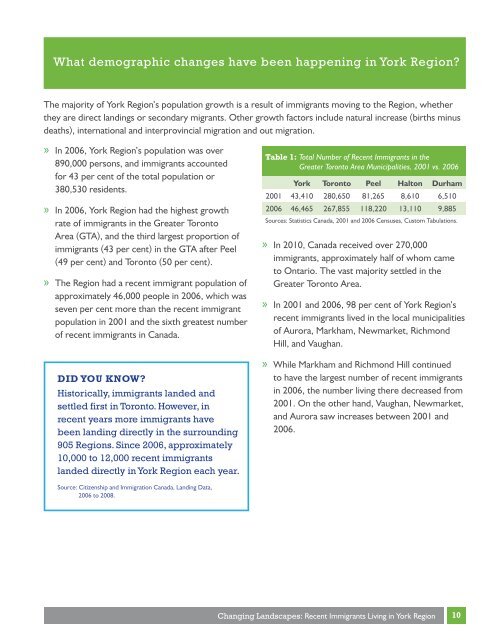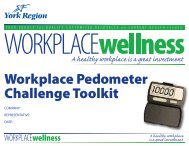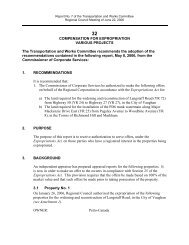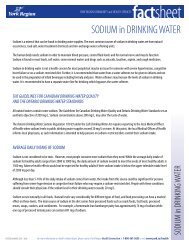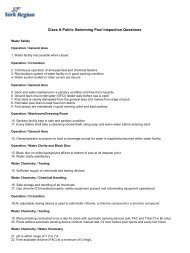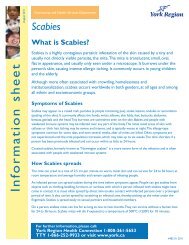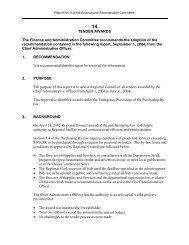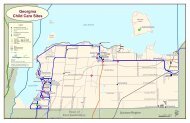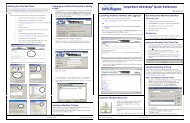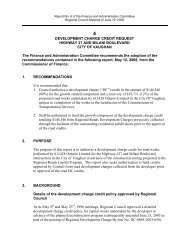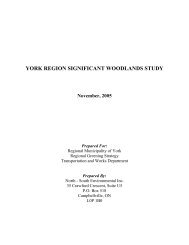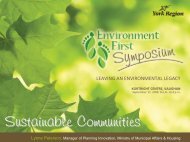Changing Landscapes: Recent Immigrants Living in York Region
Changing Landscapes: Recent Immigrants Living in York Region
Changing Landscapes: Recent Immigrants Living in York Region
You also want an ePaper? Increase the reach of your titles
YUMPU automatically turns print PDFs into web optimized ePapers that Google loves.
What demographic changes have been happen<strong>in</strong>g <strong>in</strong> <strong>York</strong> <strong>Region</strong>?<br />
The majority of <strong>York</strong> <strong>Region</strong>’s population growth is a result of immigrants mov<strong>in</strong>g to the <strong>Region</strong>, whether<br />
they are direct land<strong>in</strong>gs or secondary migrants. Other growth factors <strong>in</strong>clude natural <strong>in</strong>crease (births m<strong>in</strong>us<br />
deaths), <strong>in</strong>ternational and <strong>in</strong>terprov<strong>in</strong>cial migration and out migration.<br />
» In 2006, <strong>York</strong> <strong>Region</strong>’s population was over<br />
890,000 persons, and immigrants accounted<br />
for 43 per cent of the total population or<br />
380,530 residents.<br />
» In 2006, <strong>York</strong> <strong>Region</strong> had the highest growth<br />
rate of immigrants <strong>in</strong> the Greater Toronto<br />
Area (GTA), and the third largest proportion of<br />
immigrants (43 per cent) <strong>in</strong> the GTA after Peel<br />
(49 per cent) and Toronto (50 per cent).<br />
» The <strong>Region</strong> had a recent immigrant population of<br />
approximately 46,000 people <strong>in</strong> 2006, which was<br />
seven per cent more than the recent immigrant<br />
population <strong>in</strong> 2001 and the sixth greatest number<br />
of recent immigrants <strong>in</strong> Canada.<br />
DID YOU KNOW?<br />
Historically, immigrants landed and<br />
settled first <strong>in</strong> Toronto. However, <strong>in</strong><br />
recent years more immigrants have<br />
been land<strong>in</strong>g directly <strong>in</strong> the surround<strong>in</strong>g<br />
905 <strong>Region</strong>s. S<strong>in</strong>ce 2006, approximately<br />
10,000 to 12,000 recent immigrants<br />
landed directly <strong>in</strong> <strong>York</strong> <strong>Region</strong> each year.<br />
Source: Citizenship and Immigration Canada, Land<strong>in</strong>g Data,<br />
2006 to 2008.<br />
Table 1: Total Number of <strong>Recent</strong> <strong>Immigrants</strong> <strong>in</strong> the<br />
Greater Toronto Area Municipalities, 2001 vs. 2006<br />
<strong>York</strong> Toronto Peel Halton Durham<br />
2001 43,410 280,650 81,265 8,610 6,510<br />
2006 46,465 267,855 118,220 13,110 9,885<br />
Sources: Statistics Canada, 2001 and 2006 Censuses, Custom Tabulations.<br />
» In 2010, Canada received over 270,000<br />
immigrants, approximately half of whom came<br />
to Ontario. The vast majority settled <strong>in</strong> the<br />
Greater Toronto Area.<br />
» In 2001 and 2006, 98 per cent of <strong>York</strong> <strong>Region</strong>’s<br />
recent immigrants lived <strong>in</strong> the local municipalities<br />
of Aurora, Markham, Newmarket, Richmond<br />
Hill, and Vaughan.<br />
» While Markham and Richmond Hill cont<strong>in</strong>ued<br />
to have the largest number of recent immigrants<br />
<strong>in</strong> 2006, the number liv<strong>in</strong>g there decreased from<br />
2001. On the other hand, Vaughan, Newmarket,<br />
and Aurora saw <strong>in</strong>creases between 2001 and<br />
2006.<br />
<strong>Chang<strong>in</strong>g</strong> <strong>Landscapes</strong>: <strong>Recent</strong> <strong>Immigrants</strong> <strong>Liv<strong>in</strong>g</strong> <strong>in</strong> <strong>York</strong> <strong>Region</strong><br />
10


